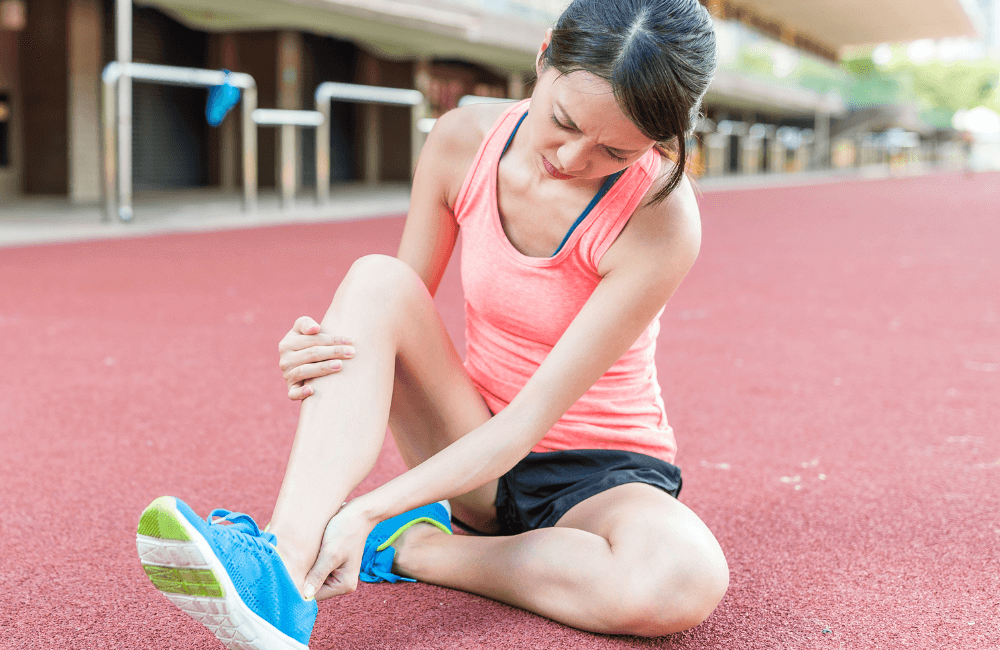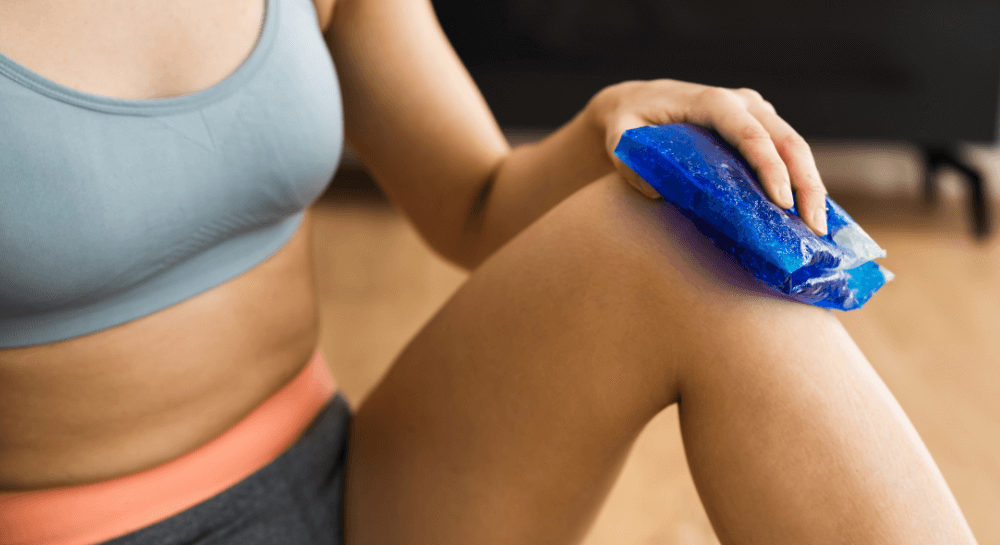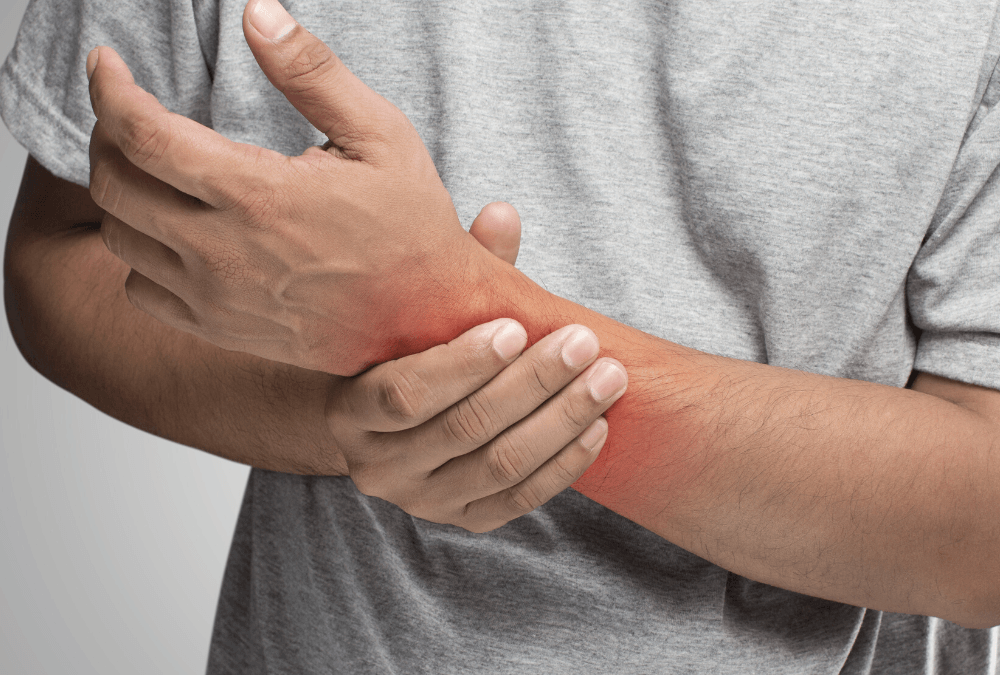Have you ever sprained an ankle while playing a sport or moving awkwardly? Or maybe it was a strain, and you simply didn’t know the difference? The terms sprain and strain are often used interchangeably, however, there are some key differences that set them apart. So, this month’s blog will dive into the differences between a sprain and a strain, along with the ways in which you can treat and prevent them!
1) Sprain vs Strain
When you experience a sprain or a strain, you cause damage to the soft tissues in your body. Both are quite common injuries that can share similar symptoms but actually impact different areas of the body. The difference between a sprain and a strain comes down to ligaments and tendons. Ligaments are tough bands of tissue that connect bones together or bones to the cartilage within a joint. Tendons are heavy bands or cords of tissue that connect your bones to your muscles.
With a sprain, you are tearing, twisting, or overstretching a ligament. This could include stretching a ligament too far or, more commonly, in the wrong direction. When trying to remember the difference between the two injuries, it may help to think about turning or rolling an ankle, which results in a sprain. Other commonly sprained areas include the wrists, thumbs, and knees – essentially, anywhere ligaments are located which is usually around joints.
Instead of affecting ligaments, sprains result from tearing, twisting, or overstretching a tendon or muscle. The most common muscle affected by strains is the hamstring with legs, knees, feet, and back.

2) Symptoms
As sprains and strains can have similar symptoms, many people tend to use the terms interchangeably. But, there are some key differences. Both sprains and strains can lead to pain, swelling, loss of mobility, decreased range of motion, and limited flexibility. The main difference between the two types of injuries is bruising. Sprains can cause bruising while strains do not. Instead, strains can lead to muscle spasms because they affect muscle groups.
3) Causes
Just like the symptoms, sprains and strains have similar causes as well. Both can happen suddenly and out of nowhere – even from simply turning into an awkward position too quickly. Unfortunately, since our bodies are constantly working and moving, most people will experience a sprain or strain in their lifetime. While common, there are certain situations that create a higher risk including:
- Overuse or prolonged repetitive motion
- Playing sports, athletic activities, or exercise – particularly those with contact or repetitive movements like rowing, running, baseball, or racquet sports
- Walking or running on an uneven surface, which can lead to accidents such as falling or slipping
- Sitting or standing in an awkward position for prolonged periods
- Lifting heavy objects or overexerting yourself
- Sitting, standing, or sleeping in an awkward position
- Twisting or pivoting suddenly

4) Risk Factors
Anyone at any point can experience a sprain or strain, but there are certain risk factors that can increase your chances of injury. These include:
- Activity Levels: Although exercising and playing sports can lead to a sprain or a strain, so can a lack of activity or being out of shape. The better shape your body is in, the better it can move. Not properly conditioning your body leaves your muscles and joints weak. They may not be able to fully support your movements, especially the sudden movements.
- Warming Up: It is crucial that you warm up and cool down before and after any physical activity. It can help you prevent injury by gently stretching and strengthening your muscles to keep your range of motion up. Remember to take proper rest days, as well to avoid fatigue which can lead to improper form.
- Environment: While sometimes hard to control, your surroundings can have a huge impact on your risk factors. Wet, slippery, or icy surfaces should be avoided when walking and running. Also make sure to always use proper equipment, including shoes.
5) Prevention
To prevent sprains and strains, try to minimize the above risk factors. Always warm up properly before exercise, wear appropriate footwear, be aware of your environment, and take breaks. Strengthening the muscles around your joints with regular conditioning and stability exercises will also help prevent injuries.
6) Treatment
We love a good acronym! The RICE technique is the most common treatment for mild sprains and strains. RICE stands for Rest, Ice, Compression, and Elevation. To rest the affected area, you want to pause all exercise or physical activity and avoid putting any weight on the joint or muscle to give it time to heal. Ice obviously stands for applying an ice pack to the injury multiple times a day to reduce swelling and inflammation. This is especially important within the first 24 to 48 hours after injury. Compression will also help reduce swelling so wrap the area in a bandage but not too tightly. Elevate the injured area above your heart if possible.
However, with more severe strains or sprains, the RICE method may not cut it. If the pain is constant or unbearable, visit your healthcare provider who may take an X-ray or refer you to our team of practitioners to treat the injury. Our physiotherapists can provide treatment to reduce pains and improve strength with rehabilitation plans including targeted stretches, exercises, and massage therapy.

—
Not all strains and sprains are preventable but with a proper treatment plan in place, you can get back to a full recovery and avoid permanent damage. We hope this blog provided you with valuable insight regarding the differences between a sprain and a strain, along with the causes and symptoms to be aware of, and the treatments and ways in which LiveWell can help. Whether you’re experiencing pain and inflammation or simply looking to boost your health and wellness, our team can help bring your physical and mental health to its full potential. Contact us to book an appointment at our Lancaster, Waterloo, Driftwood, or Baden locations. We look forward to working with you!
Want more lifestyle advice on how to improve your health and wellness? Contact our LiveWell Health and Physiotherapy Kitchener (Lancaster and Driftwood), Waterloo, or Baden teams for more information and to book your next appointment. You can also reach out to us by email or social media, and one of our team members will be more than happy to answer any of your questions! All of our practitioners have tips and expert guidance to help improve your health and overall quality of your life.

